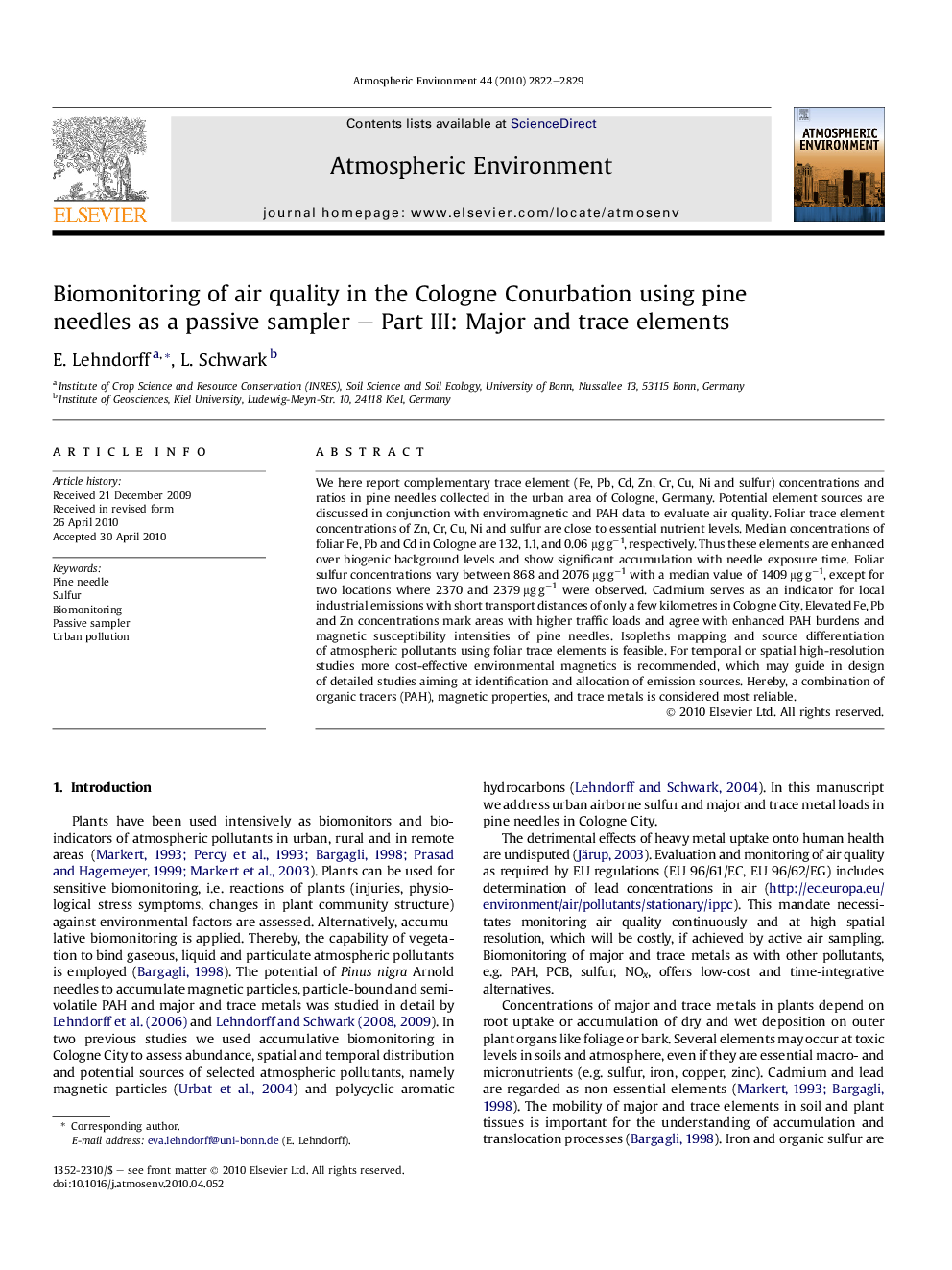| Article ID | Journal | Published Year | Pages | File Type |
|---|---|---|---|---|
| 4440821 | Atmospheric Environment | 2010 | 8 Pages |
We here report complementary trace element (Fe, Pb, Cd, Zn, Cr, Cu, Ni and sulfur) concentrations and ratios in pine needles collected in the urban area of Cologne, Germany. Potential element sources are discussed in conjunction with enviromagnetic and PAH data to evaluate air quality. Foliar trace element concentrations of Zn, Cr, Cu, Ni and sulfur are close to essential nutrient levels. Median concentrations of foliar Fe, Pb and Cd in Cologne are 132, 1.1, and 0.06 μg g−1, respectively. Thus these elements are enhanced over biogenic background levels and show significant accumulation with needle exposure time. Foliar sulfur concentrations vary between 868 and 2076 μg g−1 with a median value of 1409 μg g−1, except for two locations where 2370 and 2379 μg g−1 were observed. Cadmium serves as an indicator for local industrial emissions with short transport distances of only a few kilometres in Cologne City. Elevated Fe, Pb and Zn concentrations mark areas with higher traffic loads and agree with enhanced PAH burdens and magnetic susceptibility intensities of pine needles. Isopleths mapping and source differentiation of atmospheric pollutants using foliar trace elements is feasible. For temporal or spatial high-resolution studies more cost-effective environmental magnetics is recommended, which may guide in design of detailed studies aiming at identification and allocation of emission sources. Hereby, a combination of organic tracers (PAH), magnetic properties, and trace metals is considered most reliable.
